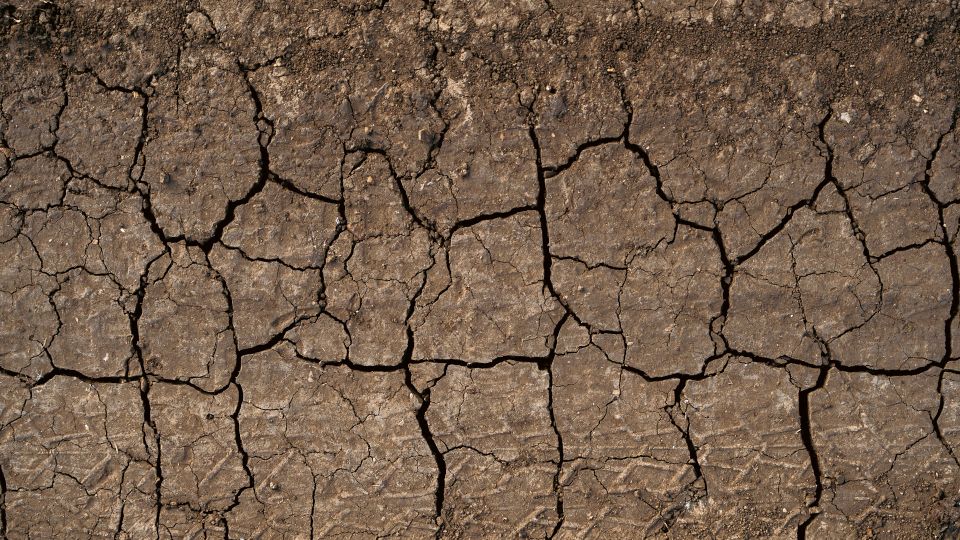During the summer months in Chattanooga, soil dry down can affect construction projects and landscaping efforts. The higher temperatures and summer sun cause soil to lose moisture at a quicker rate, creating challenges for those working on the ground. Understanding what soil dry down is and how it affects various projects helps local workers and homeowners plan more effectively and anticipate any disruptions.
Those dealing with landscaping or construction projects know how problematic dry soil can be. Properly managing moisture levels is key to ensuring stable, workable ground. From cracked surfaces to dusty, loose soil, the effects of dry conditions are noticeable, affecting both the productivity and stability of various sites around town.
Understanding Soil Dry DownSoil dry down refers to the process where soil loses its moisture content over time, often accelerated by environmental conditions. It becomes a significant challenge during the warmer months because the sun's intensity speeds up water evaporation from the soil. This change can make it difficult for workers to maintain the even, solid ground necessary for many construction activities in Chattanooga.
Why does this matter during the summer? Well, when soil dries out, it doesn't just lose water; it loses its structural integrity too. Plants and crops begin to wilt without adequate moisture, leading to less yield for agricultural operations. For construction, the soil becomes less compact and prone to shifting, making it harder to lay stable foundations.
Factors Contributing to Soil Dry DownSeveral factors come into play when looking at why soil tends to dry out, particularly in Chattanooga's summer heat:
- Temperature: High temperatures increase the rate of evaporation, causing soil moisture to diminish rapidly.
- Humidity: Low humidity levels mean there's less moisture in the air to keep the soil damp, exacerbating the dry down effect.
- Soil Type: Sandy soils tend to drain and dry out much faster than clay soils due to their larger particle size and the resulting larger pore spaces.
Each of these elements interacts with the soil in different ways, influencing how quickly it dries out. For example, a construction project started in an area with predominantly sandy soil may face more hurdles in maintaining the right moisture level for solid groundwork.
Understanding these factors allows planners and workers to anticipate challenges and develop strategies to counteract the impacts of drying soil. By adjusting methods and using specialized techniques tailored to the conditions, disruptions due to soil dry down can be minimized, ensuring smoother project timelines and outcomes.
Identifying Soil Dry Down IssuesRecognizing the signs of soil dry down is the first step in addressing its impact on your projects. Some common indicators include:
- Cracked Soil: When soil dries, it tends to crack and separate, which can weaken the foundation for buildings or landscaping.
- Dusty Conditions: Excessive dryness leads to dusty environments, making it difficult for machinery to operate efficiently and increasing health hazards.
- Plant Wilting: If the plants in the area are wilting or browning earlier than expected, it could be due to insufficient moisture in the soil.
Each of these signs can significantly affect both construction and landscaping efforts. For instance, cracked soil is not stable enough for heavy structures, while dusty conditions can interfere with machinery, leading to inefficiencies and potential delays.
Solutions for Managing Soil Dry DownAfter pinpointing the signs of soil dry down, it’s important to address them with effective strategies. Here are some practical tips to manage soil moisture levels:
1. Regular Watering: Sustain soil moisture with regular watering. Avoid over-watering to prevent soil erosion and nutrient loss.
2. Mulching: Apply mulch around plants and areas prone to drying. It helps retain moisture and keep the soil cool.
3. Cover Crops: Use cover crops like clover or rye, which can help maintain soil health and prevent drying.
4. Irrigation Systems: Install efficient irrigation systems that target root zones to minimize water waste and ensure soil remains adequately moist.
These strategies, especially when part of an integrated approach, can mitigate the negatives of soil dry down. You may also need professional techniques tailored to Chattanooga's unique climate conditions to fully manage these challenges.
Preparing for Future Dry ConditionsTo prevent the stress of dealing with dry soil in the future, consider long-term strategies that prepare your area for the inevitable heat of Chattanooga summers. Planning ahead includes:
- Soil Testing: Regularly test soil to monitor moisture levels and nutrient content, allowing for timely adjustments.
- Seasonal Planning: Adjust your planting or construction schedule to circumvent the hottest months when dry conditions are expected.
- Improved Soil Structure: Enhance soil composition with compost and organic matter to bolster its moisture retention capacity.
By considering these long-term prevention tactics, you can safeguard your site against the complications brought on by dry soil.
Ensuring Strong Soil Health in ChattanoogaAddressing soil dry down isn't just about dealing with current issues; it's about investing in the long-term health of the soil. By understanding the signs, implementing immediate solutions, and preparing for future conditions, you're not only tackling the challenges head-on but also creating a more resilient environment for all your projects. Keep these insights top of mind as you navigate Chattanooga’s summer months to maintain effective projects and thriving landscapes.
Combat the challenges of Chattanooga's summer soil dry down with Terra-Firma Stabilization & Reclamation's expert solutions. Our specialized
soil modification techniques are designed to enhance moisture retention and strengthen soil integrity, ensuring your projects remain stable and productive. Reach out to us today and let our team help you maintain optimal soil health all season long.

